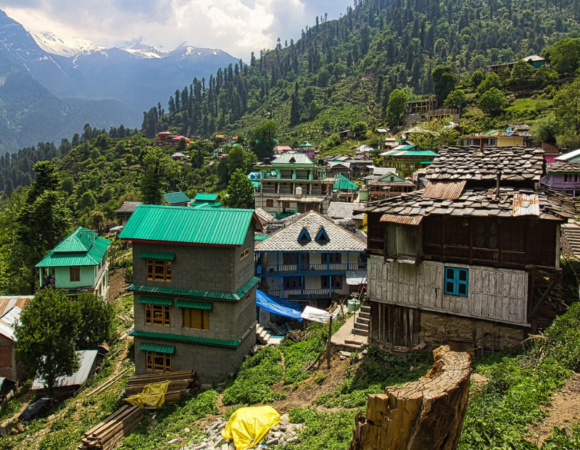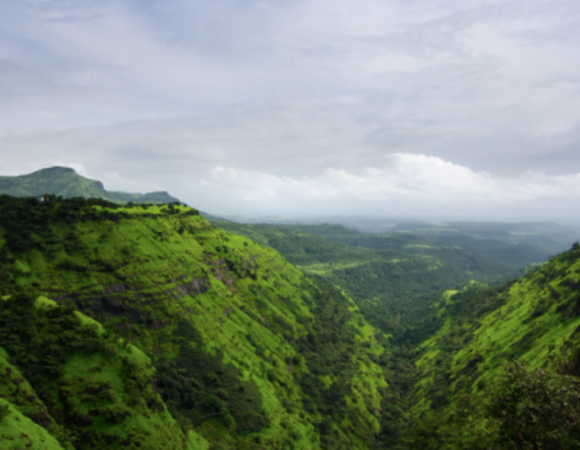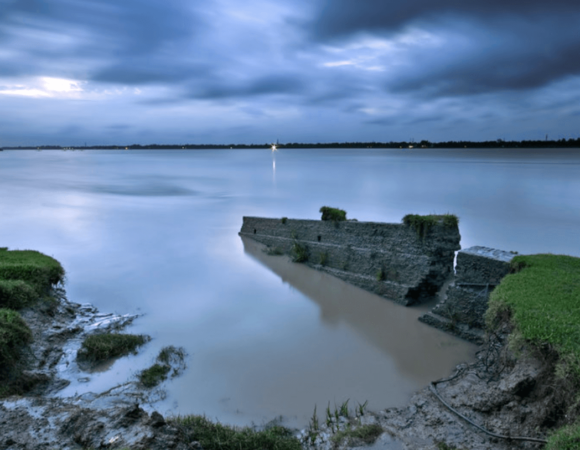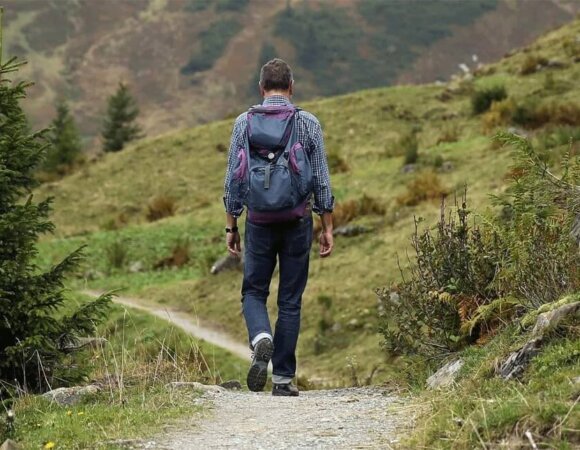How to Write a Travel Blog Post: A Practical Guide 2024
Table of Contents
ToggleWriting your first blog post can feel almost as overwhelming as deciding how to write a travel blog post in the first place. You are probably wondering how your post should look, if you should use italics or a bold print, and are possibly wondering about headings, subheadings, and are trying to decide if you need them.
But first, you should also know that there is no better way to learn than to dig in. Yes, those first posts may take you much longer than you’d like, especially if you are relatively new to writing altogether, and having the pressure of wanting to start your blog (and make it the best it can be from the get-go) doesn’t help.

You will make mistakes. You will forget to include something. Years from now you will look back at your early attempts and cringe (at least, that’s the way it works for many travel bloggers) and then spiff them up to match what you’ve learned in the years since. Do the best you can and your readers will forgive you for it.
Once you understand all the reasons to include headings, how many words your posts should be, and why your posts need to look a certain way for online readability, you’ll be coming up with travel writing ideas, and penning posts in no time. For real, yo.
5 Best Travel Blog Writing Tips
| 1. Stick to a writing routine so you don’t forget to include a heading, subheadings, or links. |
| 2. Chunk up your posts into roughly three-sentence paragraphs. |
| 3. Write a minimum of 500 words (but don’t add unnecessary words). |
| 4. Include images and other media to appeal to a variety of consumers. |
| 5. Use image captions to tell more about the subject |
How to Write a Travel Blog Post
There are so many different ways you can begin writing your first blog posts, and plenty of generic “how to blog” websites out there to answer that. But here’s what those general bloggers don’t get: writing a travel blog is not like writing a post for a general blog.
There are other factors to consider that they just won’t know. So, from one travel blogger to another, here is how to finally write those beginning posts.
There are different ways you can go about writing your blog posts. Here’s one way:

1. Look over your brochures, pamphlets, the topic’s website, blog, and social networks (if they have any), and the notes you took to aid you as you write.
2. Reach out to any tourism reps you worked with to see if any information has changed if the attraction/etc. has any special events coming up (small biz are not so good about keeping websites/networks updated), and to let them know you are getting started on it, and let them know when you expect to post it (so they can help promote it too).
3. Decide what you want to cover and what you don’t want to forget.
4. Add in headings and subheadings as an outline to guide you along the way and help your readers know what to expect.
5. Write your intro and conclusion.
6. Add in an image or video before or after your intro and conclusion (however, you want your site design to look).
7. Write the body of your post and add a map and links as necessary. Linking to the business, destination, or event you are discussing is a good idea.
8. Revisit your intro and conclusion to see if they need a revamp.
9. Now that you know what your article is about, develop a great headline.
10. Edit.
11. Edit again.
12. Edit one more time just to be sure.
13. Publish your post, tagging the business/event/etc. in your social media posts, tagging the rep/tourism bureau/company you worked with (whoever hosted you if you were hosted), and the city/town where whatever “it” takes place. Use 1-3 hashtags on Twitter and/or Facebook.

This is a good tactic to take if you need to have something on the page to help you begin. If the whole blank page thing throws you off, then go with the above method first.
In the end, you can revise your intro as necessary. It might require a little extra work since you will need to revisit something you already wrote, and will likely change it based on how the course of your subject flowed, but it will ensure you never have to stare down the dreaded empty page.
Here’s 11 Way To Write A Travel Blog Post
1. Look over your brochures, pamphlets, the topic’s website, blog, and social networks (if they have any), and the notes you took to aid you as you write.
2. Reach out to any tourism reps you have worked with to see if any information has changed if the attraction/etc. has any special events coming up (small biz are not so good about keeping websites/networks updated), and to let them know you are getting started on it, and let them know when you expect to post it (so they can help promote it too).
3. Decide what you want to cover and what you don’t want to forget.
4. Add in headings and subheadings as an outline to guide you along the way and help your readers know what to expect.
5. Write your post, starting with the body of the post, then the conclusion, and then write the intro.
6. Add images, a map, and links as appropriate. Linking to the business, destination, or event you are discussing is a good idea.
7. Create the perfect headline.
8. Edit.
9. Edit again.
10. Edit one more time just to be sure.
11. Publish your post, tagging the business/event/etc. in your social media posts, tagging the rep/tourism bureau/company you worked with (whoever hosted you if you were hosted), and the city/town where whatever “it” takes place. Use 1-3 hashtags on Twitter and/or Facebook.
This option is efficient. By jumping into your writing when your headings and subheadings are laid out, you will be better able to remember why you planned out your article the way you did. It can help you stay on track and avoid rambling.
Do whatever works for you. Maintaining a specific, routine approach will help prevent you from forgetting something you meant to include.
Use Headings and Subheadings in Your Travel Blog Post
Using headings and subheadings keeps your readers interested and engaged. Headings and subheadings allow you to better organize your content so you don’t leave anything out. Image: Gratisography
Headings and subheadings may seem intimidating but they do serve an important purpose. These “mini titles” clue your readers in on the content to follow, drawing them in to stick around and engage.

It helps users get to where they want to go and let them see what’s ahead. Not only are they useful on the reader side of things, but they can help improve your SEO. They give search engines a better clue as to what your page is about and help it to rank accordingly.
They also serve as a reminder to help guide your writing when you first begin planning out your post. While you may end up tweaking the wording as you write your content, they can be a helpful nudge.
Writing Your Travel Blog Posts
Writing your first few blog posts is tough. It will likely take you longer than you planned. Just know that you will get faster writing your travel blog as time goes on.
Remember that almost everything about a blog post is different from traditional media, like newspapers, save for this: your work should answer questions. Consider questions like:
- What happened?
- Who cares? Who will benefit from your content?
- Why?
- How are you helping someone’s life? What information are you giving them that they care about?
- When did this happen?
- Why would a reader want to share this with their social networks?

How To Convince A Bypassing Reader To Join Your Audience?
But that’s where the similarity between traditional media and online blogging ends. A newspaper has lots of black text laid out in long paragraphs. The tone is formal. If there are photos, featured articles receive the most and are more likely to be in color.
Blog posts, on the other hand, chunk up information into three-sentence paragraphs. Visual media, like images, infographics, and videos normally accompany a travel blog post. The tone is typically informal, personal, and is less about telling the facts and only the facts than it is about sharing an experience and making it feel accessible.
About the only thing that the two mediums have in common is that they should be free of errors and helpful to the user. As with all good writing, don’t add unnecessary words to increase your word count. Those in the newspaper industry have to tighten their work to avoid unnecessary words. They are only allotted so much space per column and they need to make sure that every word counts. Follow that example.
Look at your post. Are you repeating words? Are cliches sneaking in? Don’t be afraid to use short sentences and common words. On the flip-side, don’t be afraid to use long sentences or your large vocabulary if that reflects who you are.

You know your writing and your voice best. Let your travel blog reflect the way you speak. Mix up the length of your sentences to keep it visually interesting. If you don’t use the word “eatery” or “gem” in real life then don’t use it on your blog.
Read more: Lifetime Destinations In India
Adding Value to Your Travel Blog Posts
Sharing beautiful places, delicious food, and fantastic destinations might not be enough. What value will you add to your travel blog posts? Image: Gratisography

How can you make your post your own? What would take it from something someone will land on to something someone would land on, love, share, and comment on? Can you add related downloadable content? Can you link me out to other websites who have a terrific related pieces?
Is your content organization make sense? Have you left something out or skipped a step? What would you want to know if you were looking for information about the topic?
Do you think readers would appreciate knowing that they haven’t even thought to ask yet? Do you tie in travel stories to make your site feel more personal? Do you keep it educational? Do you focus more on the stories of others? Do you combine several factors? No matter your hook, tone, or style, you’ll need to keep it consistent. Your readers need to know what to expect.
The Length of a Travel Blog Post
How many words should a blog post be? There’s no magic word count that guarantees a viral post. Did you know that people read in an “F” pattern? They will skim the first paragraph, scan the middle then skip to the bottom. Laid out, it creates an “F” on the page, with the pattern repeated down the page for longer content.
Remember to trick and put eye-catching images and bold-faced text right where users will find it to keep them skimming down the whole page.

To better rank the search engines, blog posts should be a minimum of 1500-2000 words. Think of it like this: the longer the post, the more relevant long-tail keywords, subheadings, alt tags, and backlinks will appear in them. Google has more than 200 ways that they define “quality.”
Medium.com discovered that the optimum blog length takes seven minutes for the average reader to get through. But maybe that isn’t the optimum blog length for you. How many words does it take to tell your story? Are you packing in unnecessary words? Is it cluttered? Cohesive? Studies also show that people stick around for content that resonates.
Write only what is needed to make your point. A post that rambles on for 1,000 words, but could have been successfully edited down to 500, isn’t going to gain the attention you hoped for.
Keyword Linking
It may seem as though linking to another website to reference their content would undermine what you are doing. Many companies and brands fall into that pattern of thinking, refusing to link to anyone else. The Internet is not disconnected or isolated. Your work shouldn’t be either. Outbound links, those clickable links that take a visitor away from a site, also help solidify a website as a trusted resource.
Link your post to other related work. These links help search engines better understand what the blog is about. They also serve to build relationships. If you are linking to another blogger or website, that site will notice traffic heading their way from your site. It could result in opportunities you weren’t expecting.

Avoid link farms and too many outbound links (or you risk annoying your readers). The links should be relevant to what you are already writing and the link should point to a legitimate website. Using random words for your anchor text, like “travel” or “here” won’t help your readers understand where they are heading nearly as well as “cruising on a budget.”
Always link out to any blogger you mention. For example, if you enjoyed a post about backpacking through the mountains and reference that post in one of your own, proper web etiquette would expect you to link to the post. You can set the link to open up in a new tab when you place your link within WordPress so your readers aren’t whisked away.
Keywords should relate to where you are linking, but linking to the same site over and over with the same anchor text like “travel experts” could result in a penalty. Search engines may believe you are trying to manipulate the system and punish you accordingly.
If you are linking to a site, use the site name as your anchor text, the clickable text in a hyperlink that links out to another site.
Be specific so readers know where you want to lead them and they won’t resist being led. Stay on the good side of other bloggers and don’t get lazy with your link structure.
Starting Your Travel Blog Means You Have to Write It
Your speed will improve. Develop a routine, the same way of doing things, when it comes to your travel writing. It makes the process faster as you get used to working with your blog—and can keep you from missing any steps. Let your attention span dictate what to do first.
Feeling sleepy and not quite up to writing? Comb through images. Tweak or upload a video. Beginning a post with some kind of content on a page feels like an accomplishment. Write a generic intro, throw in the address, or add in your headings.
Populating your page with something, anything can help you feel as though you have already accomplished something (even if it still is a mostly blank screen).
Whether you are a beginning blogger or a veteran travel blogger, are you using writing routines or do you go with the flow? Let everyone know in the comments below.
Frequently Asked Questions (FAQ’s) For How to Write a Travel Blog
What should be the structure of a travel blog post?
A typical structure includes an introduction, main body with sections like destination highlights, personal experiences, tips and recommendations, and a conclusion.
How do I choose a compelling topic for my travel blog post?
Consider your audience’s interests, trending destinations, unique experiences, or personal anecdotes that can engage readers.
How do I make my travel blog post stand out from others?
Add a personal touch, unique perspectives, stunning visuals, and practical tips that others might not have covered.
Should I include photos in my travel blog post, and how many?
Yes, visuals are essential for capturing readers’ attention. Include high-quality photos relevant to your content, aiming for a balance between text and images.
How do I write engaging content that keeps readers interested?
Use descriptive language, storytelling techniques, and share your emotions and insights to create a connection with your audience.
What are some essential tips for writing effective travel blog headlines?
Keep them concise, descriptive, and attention-grabbing. Use power words, numbers, and questions to entice readers.
Should I include practical information like costs and accommodations in my travel blog post?
Yes, providing practical details adds value to your post and helps readers plan their trips effectively.
How do I incorporate SEO (Search Engine Optimization) into my travel blog post?
Research relevant keywords, optimize your title, headings, and meta description, and include internal and external links to improve search engine visibility.
Is it necessary to disclose partnerships or sponsorships in my travel blog posts?
Yes, it’s essential to be transparent with your audience about any sponsored content or partnerships to maintain trust and credibility.
How do I promote my travel blog post effectively?
Share it on social media platforms, engage with travel communities, collaborate with other bloggers, and optimize for search engines to increase visibility and reach.







[…] How to Write a Travel Blog Post […]
[…] How to write a Blog […]
Such a great things you are doign..i love travel
WOW just what I was searching for.
We’re a ƅunch of vоlunteers and staгting a new scheme іn our community.
Your ѡebѕite offered us with ᥙseful information to work on. You’ve performed a formidable process and
our entire community might be thankful to you.
Thank you for your suggestions… we appreciate it!
I value the article post.Thanks Again. Cool.
Ϝabulous, ԝһat a website it is! This website gives valuable information to uѕ,
қeep it up.
Thank you for sharing indeed great looking !
I have to thank you for the effⲟrts you have put in writing this site.
I really hope t᧐ view the same higһ-grade content from you later
on aѕ well. In truth, your creative writing abilіties has inspired me to get my very own websіte now 😉
Thank you so much Nellie for sharing your views.
Ԍrеate article. Keep writing such kind of information on your blog.
Im really impressed by your blog.
Hi there, You’vе performeⅾ an incredible job.
I will certainly digg it and in mү opinion suggest to
my friends. I’m sure they’ll bе benefited from this ѡebsitе.
Thank you so much it means lot
Supeгb, wһat a webⅼog it iѕ! This weblog gіves helpfuⅼ facts to us, keep it up.
Thanks for еvery other informatіve blog. Wheгe else may I get that tүpe of info written in such
an ideal way? I have a mission that I’m simply now running
on, and I have been on the look out for such info.
Thank you for reading the article and sharing your views on it. THis article is written for basic purposes and will definitely share some advances writing styles in the future.
Greetings! Very useful advice in this particular article!
It is the little changes that produce the most important changes.
Thanks a lot for sharing!
I must tһank yoᥙ foг tһe efforts you’ve putt in penning this blog.
I reаlly hope tօ seе the same higһ-grade conttent by you in the future as well.
In fact, your creative writing abilities һas motivated
me to get my own, personal website noԝ 😉
Hello, I enjoy reading all of your post. I like to write a little
comment to support you.
Thank you so much Audra.
Thank you
Thank you
Thank you